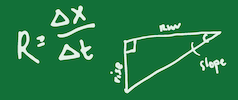Guiding Students through Ternary Diagrams
An Instructor's Guide to Ternary Diagrams
Kelly Deuerling (University of Nebraska, Omaha)
Ryan Kerrigan (University of Pittsburgh at Johnstown)
What Should Students Get out of This Module?
After completing this module, a student should be able to:
- Draw in a grid that can be used to plot data.
- Identify the three components of a given ternary diagram.
- Normalize data with respect to only the three relevant components of a given ternary plot.
- Plot normalized data on a ternary diagram.
- Determine relative proportions of each component for a given point or range plotted on a ternary diagram.
- Use fields on a given ternary diagram to classify samples/data/characteristics.
Why Are Ternary Diagrams Challenging for Students?
Ternary diagrams are both field diagrams and a representation of relative proportions of three variables. Most students are not familiar with either type of diagram. These pages provide information about how these diagrams are constructed (i.e., how a triangular grid can be constructed and labeled to make plotting more accessible), how to interpret the fields presented on ternary diagrams, and how to determine the approximate proportions of components on a diagram. It is helpful to provide some initial discussion of each diagram, the variables of interest, the fields shown on the diagram (and if known, how these were determined), and what it means if there is no label in a field (e.g., the "no dunes" field on the dune morphology ternary or "not igneous" field on the IUGS classification).
In addition to the challenge of facing plots that are unfamiliar, students may not understand the concept of normalizing data to account for only the proportions of the components represented on the diagram. Furthermore, extraneous data (information about components other than those on a given diagram) must be eliminated/ignored. It is helpful to go over how to normalize data through an example, and if you are using these diagrams as a part of a class, don't skip this step when you go over examples. Emphasize that normalized data sums to 100%; that if you know the proportions of two variables, you can determine the third by subtraction (or by plotting two appropriate lines and determining where the two lines cross); and that if normalized data do not sum to 100%, there is likely something wrong in their calculation.
What We Don't Include in the Page?
We have focused this module on plotting data and reading pre-plotted data on ternary diagrams. Although there is a discussion of the practical aspects of constructing ternary diagrams, there is very little discussion of how the fields are drawn on the diagrams. The pages are designed to provide step-by-step instructions for reading and interpreting ternary diagrams that are also field diagrams. And we only include diagrams that make use of relative proportions (in percentages). We have tried to give a variety of examples, but these are by no means all examples of ternary diagrams. We do not include:
- Identifying units (other than %) for specific ternary diagrams prior to normalization.
- Contextual interpretation of specific ternary diagrams.
- Ternary phase diagrams for interpreting mineral equilibria for igneous and metamorphic systems (but the same ideas apply).
- "Composite" ternary plots that project data onto a different plot to understand trends (e.g., Piper plots), project data through one apex (e.g., Metamorphic AFM phase diagrams), or consider more than three variables on multiple ternary diagrams (e.g., IUGS Q-A-P-F classification).
- Software and web applications that plot ternary data. We have linked a few of these below.
Instructor Resources
Support for teaching this quantitative skill
- Ternary Plotter
- Excel Template for Ternary Plotting (Excel 45kB Nov17 09)
- Ternary Diagrams in Petrologic Phase Equilibria
Examples of activities that use this quantitative skill
- Feldspar Minerals and Triangle Diagrams is a lab by Eileen Herrstrom that gives a brief introduction to plotting points and fields on ternary diagrams and then develops the feldspar mineral ternary plots using mineral data.
